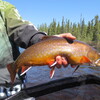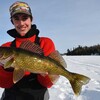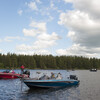Trouting Across Northern Ontario
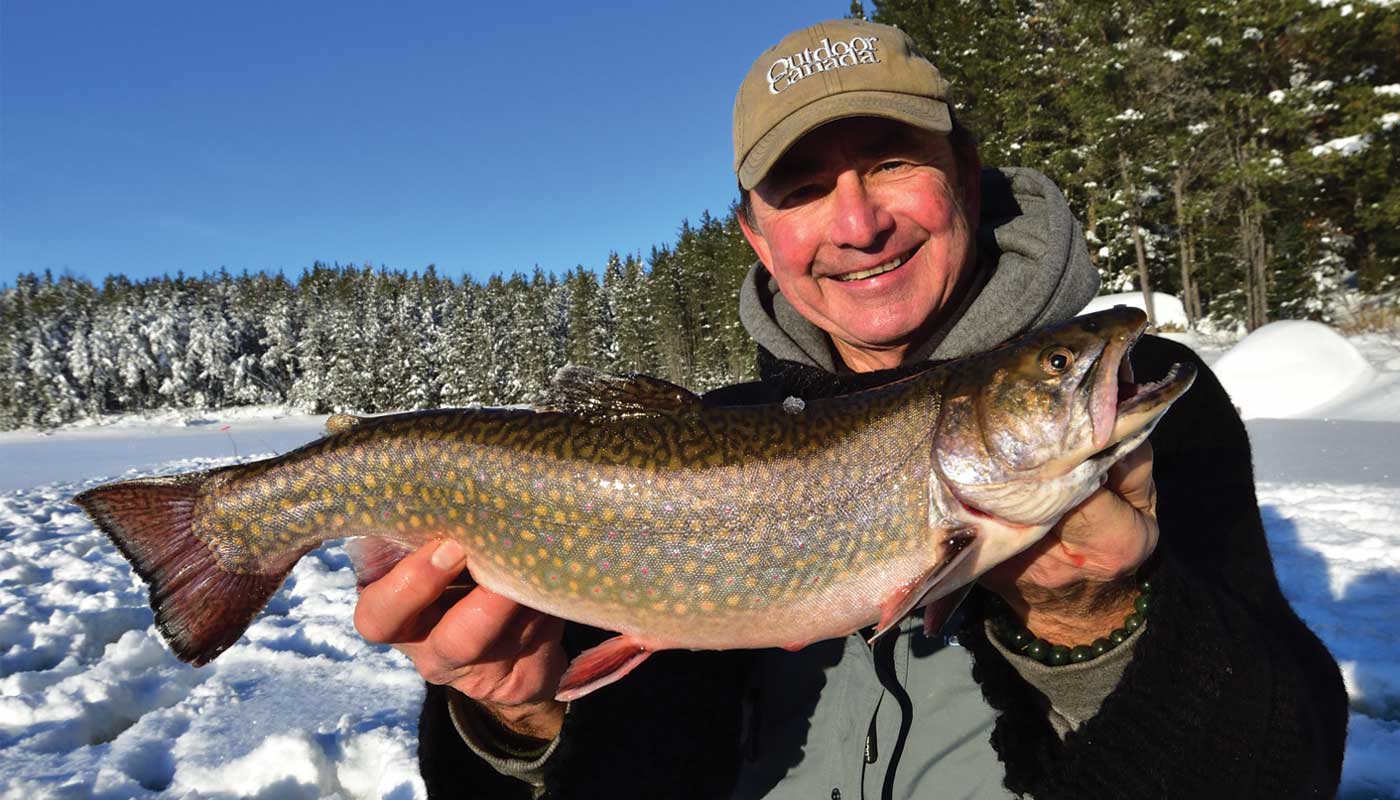
Northern Ontario is blessed with an extraordinary abundance of easily accessed, gorgeous, spruce- and pine-studded, picture-postcard lakes that are stocked with speckled trout, rainbow trout, and splake unlike you can find almost anywhere else in the world.
To give you an example, it is a distance of 1,570 km—or 1,000 miles—from the city of North Bay in Northeastern Ontario to Kenora in the Northwestern part of the province, and the entire wild immensity in between is sprinkled with some of the finest waters brimming with trout.
And that is just the east-west extent of the cornucopia of trout riches. It is even more spacious if you look at it from a north-south perspective.
And guess what? Winter is one of the best times to target stunningly beautiful fish.
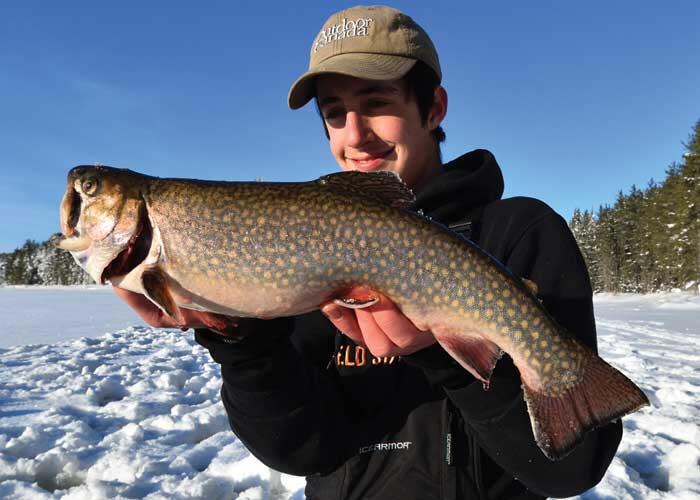
It makes sense, too, when you consider that specks, rainbows, and splake are cold-water fish that relish winter water temperatures. So, they feed aggressively and smash a variety of presentations when most other species are cozying up to the fireplace and pulling the down comforters over their heads.
But there is a secret you can employ that will increase your odds of hooking the wonderful winter trophies. It is stepping lightly when you're out on the ice.
Indeed, the very best winter trout locations are often large, shallow, soft-bottomed—even weedy—flats where the water is less than ten feet deep. These food-rich fields are the most fertile parts of the lake, where invertebrates like mayflies and caddisflies abound.
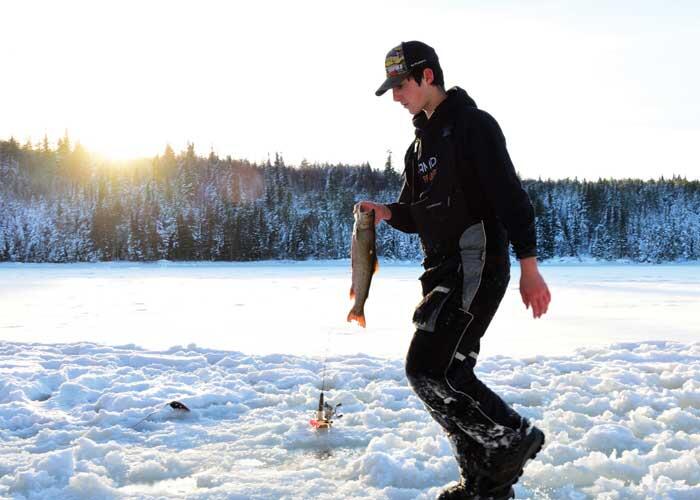
In fact, as hard as it is to believe, there are often as many as 120 protein-packed mayfly nymphs crawling around every square metre of the lake bottom. For the trout, it is like someone spilled the biggest bag ever of hot buttered popcorn, or roasted and salted pistachio nuts, on the floor. So, they can slide in from slightly deeper water, or move along the shoreline and gobble up the luscious goodies like finned Willie Wonkas in a chocolate factory.
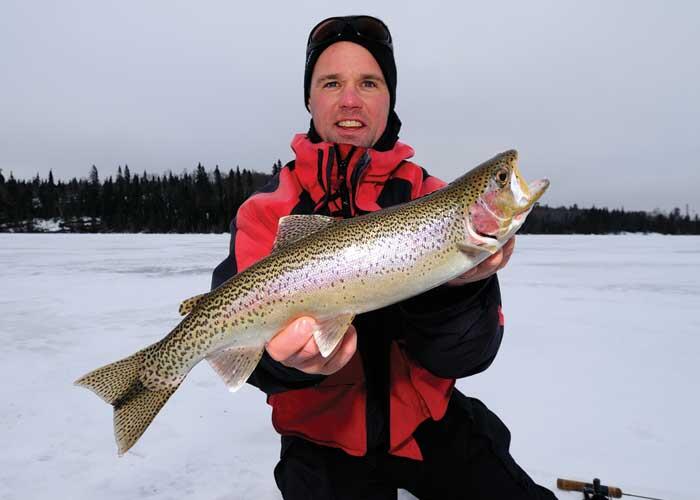
But, since most stocked trout lakes are clear, you can easily spook the fish and drive them away from the dinner table. It is why I always like to drill far more holes than I think I am going to need, over as many different depths as I think I am going to fish, as soon as I arrive in the morning. Then I don't touch the super quiet electric ION ice auger again until it is time to go home.
I also make it a point to never run the snowmachines or ATVs around the immediate area where I am fishing. Imagine you're a wary trout living in a secluded backwoods lake. The sound of silence is deafening. Then suddenly you see this huge dark shape come roaring above your noggin and hear the wheels and tracks tearing up the snow.
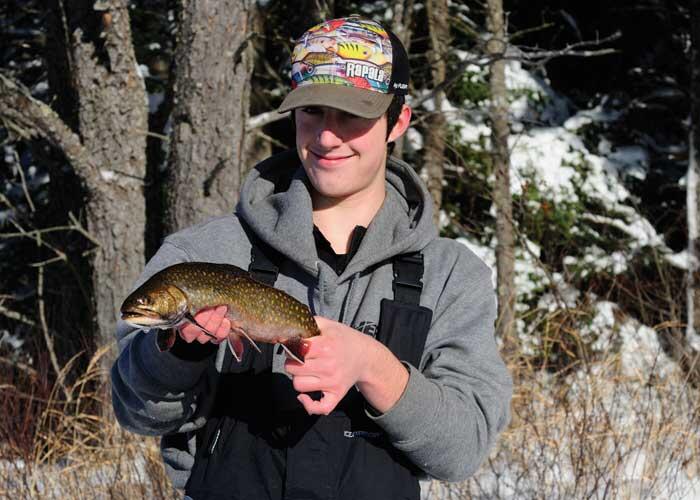
Chances are, it is going to interrupt your dinner, give you heartburn and entice you to swim away.
Ditto, when suddenly you are trapped in the spotlights streaming down from above, like a frightened deer caught in the headlights. Again, you are going to put down your fork and move on.
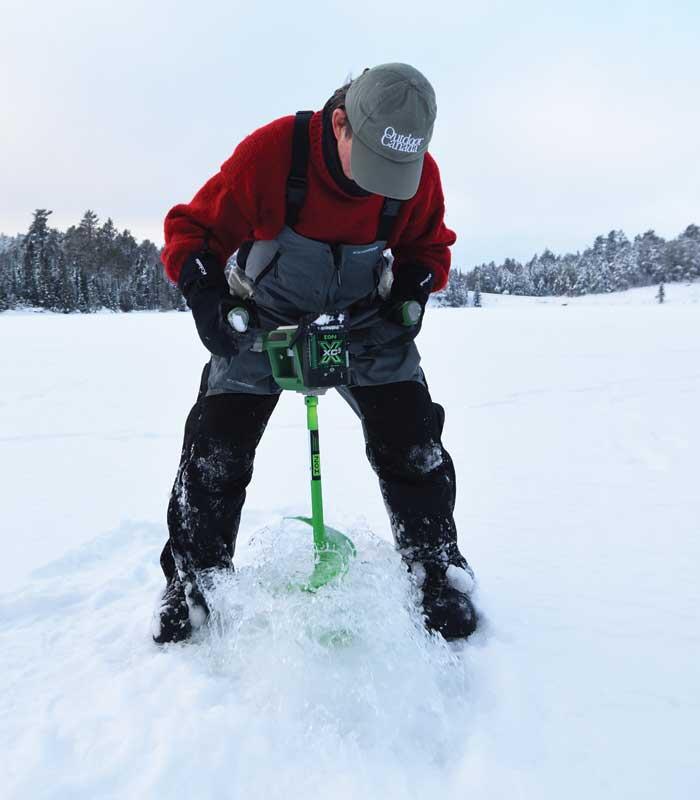
When I am ice fishing for walleyes, yellow perch, black crappies, and lake trout that you typically find in much deeper water, I like to shovel off a 2- or 3-square-foot area and then drill my hole in the centre. It provides a stable platform for my feet, sonar unit, and tip-up and makes landing fish much easier.
But, I never shovel away the snow from around my holes when I am ice fishing for stocked trout in shallow water. In fact, I'll often place a cover over the opening to stop any light from sneaking into the hole. HT Enterprises makes inexpensive hole covers that you can buy, or you can make your own from pieces of 1- or 2-inch soft foam. Simply cut them into 12-inch diameter circles and then, using a sharp knife, slice an incision from the edge to the centre, through which you can run your tip-up line. As well as blocking out the light, it keeps your hole from freezing up.
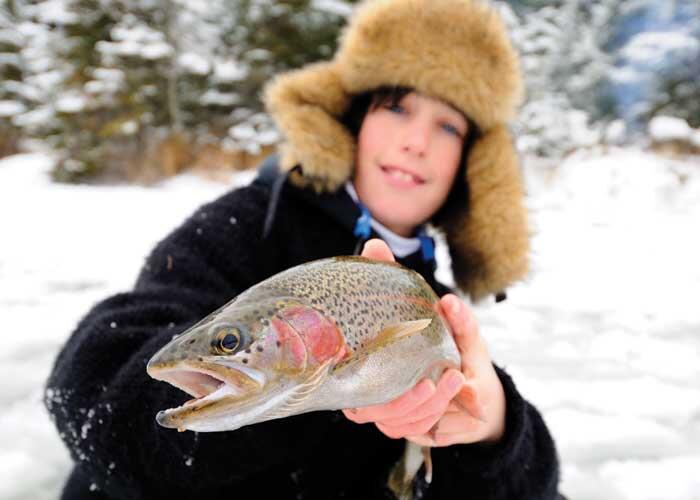
Finally, I love to fish outside when the winter days are sunny and gloriously warm, but when I am ice fishing for trout in shallow water, I'll bring my Eskimo Evo-1 Crossover and fish from inside it. It is extremely light to pull, pops up in seconds, and shades the area over which I am fishing. Even better still, in the transparent water, I can watch the gloriously hued speckles, rainbows, and splake swim in, open up their mouths and devour my bait.
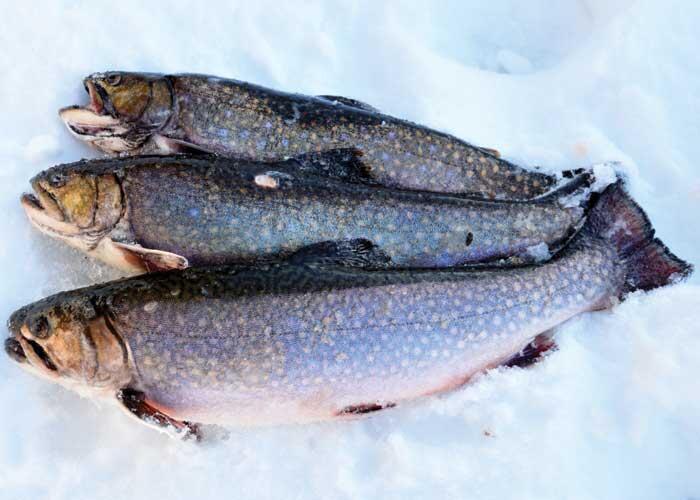
That is when I know life is good, trouting across Northern Ontario.
Recommended Articles

10 Facts About Lake of the Woods
Top 8 Places to Ice Fish in Ontario

Eating Northern Pike

Predicting Lake Thickness
Top 5 Musky Destinations in Ontario

Top 5 Baits for Smallmouth and Largemouth Bass

Top 5 Flies for Brook Trout

3 Great Ontario Walleye Destinations

Shoreline Strategies

A Whole Lota Lovin'
Awesome Algonquin
Ontario Brook Trout
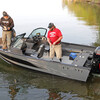
5 Things to Consider When Buying a New Boat!
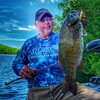
Discover the 3 Best Bass Fishing Lakes in Ontario

Big Moose Camp

A Happy Fishing Place

20 Years With Fish TV!
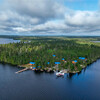
Outpost Walleye in Brook Trout Country
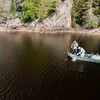
Ultimate Drive-to Smallmouth Bass Fishing
